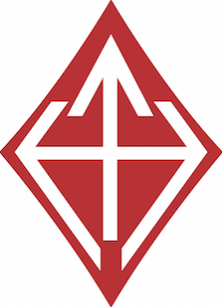FLY FAST, DIE LAST (2017)
Belgian artist Tom Herck shares his captivating experience of embarking on an adventure in the Canadian wilderness, specifically at Takla Lake in British Columbia. This remote location, situated more than 400 kilometers away from the nearest town and characterized by its lack of cell phone signal, served as the backdrop for a unique and memorable artistic endeavor.
Herck's journey was prompted by his friends, who had previously spoken about him to the owner of a DHC2 plane, commonly referred to as a Beaver plane. The plane's owner, a resilient individual who had survived a plane crash and endured severe burns, extended an invitation to Herck to paint his aircraft.
Inspired by the pilot's rugged and fascinating life story, Herck embarked on the project with creative freedom. He decided to adorn the plane with the text "fly fast, die last," a play on the popular saying "live fast, die young." This choice was a nod to the pilot's own intense experiences and served as a form of tribute to his tenacious spirit. The resulting design carried a touch of satire, blending elements of contemporary commentary with a classic "vanitas" theme.
On one side of the plane, Herck painted a dynamic portrayal of a living eagle, conveying a sense of aggression and power. The eagle's wings were depicted as intact, extending beneath the wings of the aircraft. This depiction was reminiscent of WWII planes adorned with striking designs to intimidate adversaries. The limited painting supplies available at the remote camp—basic paint colors and worn-out brushes—contributed to the raw and aggressive aesthetic of the artwork, which Herck viewed as a favorable outcome.
The "fly fast, die last" lettering on the plane evoked the imagery of old-school tattoos, further adding to the intriguing narrative. A medal and a rocket symbolizing speed were also incorporated into the design. Herck's signature logo was placed on the back of the tail, marked in red.
On the other side of the plane, Herck transformed the eagle's image into a threatening skull, employing sharp contrasts and bold strokes. The wing of the aircraft was artistically rendered as a skeleton wing, adorned with a skull and crossbones emblem and a grave marked "RIP T. Herck." The artist's birth year, 1984, was visible, while the end date was depicted as overgrown with grass, symbolizing an open-ended narrative.
The entire project encapsulates Herck's ability to merge art with storytelling, history, and personal experiences. His creative choices, from the text and imagery to the rough aesthetic, come together to form a visually compelling and conceptually layered artwork. The backdrop of the remote wilderness adds an element of adventure and exploration to the artistic process, making the story even more captivating.
Fly fast, Die Last
2017
Map.
Takla lake (CAN)
Fly fast, Die Last
2017
Ambiance.
Takla lake (CAN)
Fly fast, Die Last
2017
Ambiance.
Takla lake (CAN)
Fly fast, Die Last
2017
Ambiance.
Takla lake (CAN)
Fly fast, Die Last
2017
DHC2 plane 2,7 x 14 x 9 m
Painted with acrylic paint.
Fly fast, Die Last
2017
DHC2 plane 2,7 x 14 x 9 m
Painted with acrylic paint.
Fly fast, Die Last
2017
DHC2 plane 2,7 x 14 x 9 m
Painted with acrylic paint.
The completion of the artistic project involving the plane was followed by a harrowing incident that added a dramatic twist to the entire experience. As Herck and his team were taking photographs of the plane's maneuvers over the lake, a sudden and unexpected turn of events unfolded.
The pilot was piloting the plane in circles across the lake while Herck and his team were aboard a boat, capturing images of the aircraft in action. However, as the plane approached the boat at high speed, a critical malfunction occurred with the boat's engine. Despite their attempts to restart the engine, they were unable to do so in time to prevent a collision. The plane collided with the boat, with its blades coming perilously close to Herck. In the midst of this dangerous situation, Herck still clutched his Nikon camera in his hands, capturing a gripping final image of the plane approaching him.
Realizing the imminent danger, Herck made a split-second decision to jump off the boat and into the ice-cold water, despite wearing a heavy winter coat. The risk of hypothermia was very real, given the circumstances. Fortunately, his friends were able to swiftly pull him to the safety of the shore, where he was provided with dry and warm clothing.
The incident not only marked a shocking turn of events but also highlighted the level of dedication and determination Herck had for his art. His willingness to risk his safety in pursuit of capturing the perfect shot is a testament to his commitment to his craft.
Looking back on the event, Herck and his team are reminded of the close call they had experienced. The tombstone, a symbol of finality, could have potentially borne the year 2017 as a tragic end to this story. The incident serves as a chilling reminder of the unpredictability and dangers that can arise, even in the pursuit of creative expression.
Despite the challenges and risks faced, the project itself stands as a testament to Herck's artistic vision and adventurous spirit. The combination of the plane's striking design, the remote wilderness setting, and the unexpected twist of fate all contribute to a story that is both gripping and awe-inspiring.
Fly fast, Die Last
2017
Ambiance.
Takla lake (CAN)
Fly fast, Die Last
2017
Crash.
Takla lake (CAN)
© Text by Lara van Oudenaarde.









